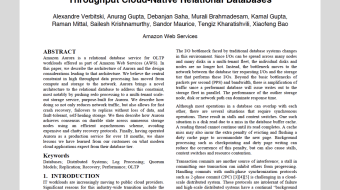Customer-obsessed science


Research areas
-
September 26, 2025To transform scientific domains, foundation models will require physical-constraint satisfaction, uncertainty quantification, and specialized forecasting techniques that overcome data scarcity while maintaining scientific rigor.
-
Featured news
-
EACL 20242024Large language models (LLMs) have demonstrated impressive performance on a number of natural language processing tasks, such as question answering and text summarization. However, their performance on sequence labeling tasks, such as intent classification and slot filling (IC-SF), which is a central component in personal assistant systems, lags significantly behind discriminative models. Furthermore, there
-
WSDM 20242024Anomaly detection on graphs focuses on identifying irregular patterns or anomalous nodes within graph-structured data, which deviate significantly from the norm. This domain gains paramount importance due to its wide applicability in various fields such as spam detection, anti-money laundering, and network security. In the application of anomaly detection on graphs, tackling the challenges posed by label
-
2024Modern Automatic Speech Recognition (ASR) systems are evaluated with respect to Word Error Rate (WER). While WER is a useful metric for training and evaluation of speech models, it does not fully reflect the difference in semantics between predicted and ground truth transcriptions. In conversational voice assistants, the ability to sufficiently understand the semantic meaning of the user request is often
-
ASPLOS 20242024Designing performant and noise-robust circuits for Quantum Machine Learning (QML) is challenging — the design space scales exponentially with circuit size, and there are few well-supported guiding principles for QML circuit design. Although recent Quantum Circuit Search (QCS) methods attempt to search for performant QML circuits that are also robust to hardware noise, they directly adopt designs from classical
-
ICSE 20242024Identifying correct and complete taint specifications is critical for detecting vulnerabilities in the ever-changing landscape of software security, and an automated scalable and practical solution remains elusive in the field. In this paper, we report our semi-automated scheme for inferring and maintaining taint specifications at industrial scale. Knowledge graph is adopted as the core engine to represent
Collaborations
View allWhether you're a faculty member or student, there are number of ways you can engage with Amazon.
View all














































